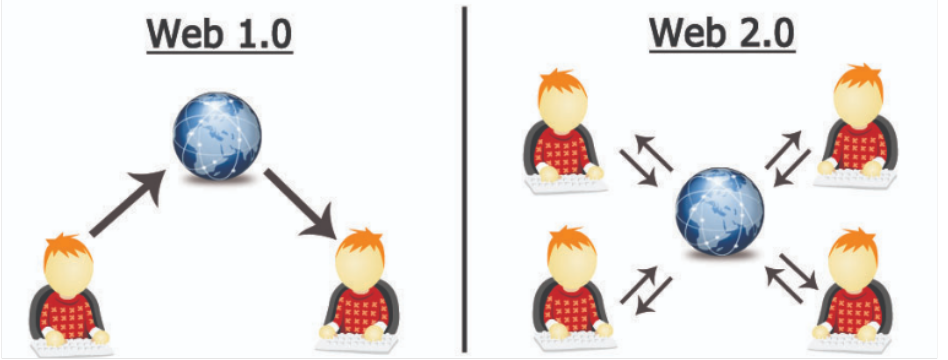Web 2.0
Table of Contents
It is the evolution of Web 1.0 by adding Dynamic pages.
Darcy DiNucci
- An information architecture consultant who coined the term "Web 2.0", in her January 1999 article "Fragmented Future".
Tim O'Reilly
- an Irish-American author and publisher
- He popularized the terms open source and Web 2.0.
- He proposed a long-term vision of the
Definition
- 1999
- The user is able to see a website differently than others.
- It also allows users to use Browsers instead of just using their operating system.
- This is what we call Dynamic pages.
- Most of the websites nowadays are Web 2.0.
Browsers
- It can now be used for their user interface, application software (or web applications), and even for file storage.
Dynamic pages
- The content is dynamically produced when the user requested to.
Examples
- Social networking sites - Blogs - Wikis - Video sharing sites - Hosted services - Web Applications
Features
Rich User Experience
- dynamic content that is responsive to user's input.
- An example would be a website that shows local content. In the case of social networking sites, when logged on, your account is used to modify what you see in their website.
- This also refers to websites having Dynamic pages.
Long Tail
- services are offered on demand rather than on a onetime purchase. In certain cases, time-based pricing is better than file-size-based pricing or vice versa.
- synonymous to subscribing to a data plan that charges you for the amount of time you spent in the Internet, or a data plan that charges you for the amount of bandwidth you used.
- On-demand is like renting an apartment monthly instead of one-time purchase of buying an entire house.
User Participation
- also known as crowdsourcing.
- Crowdsourcing involves a large group of dispersed participants contributing or producing goods or services.
- The owner of the website who is able to put content.
- Others are able to place a content of their own means of comment, reviews, and evaluation.
- Similar to how users can edit and modify existing pages in Wikipedia.
Mass Participation
- It is a diverse information sharing through universal web access.
- Websites such as Facebook, Reddit, Instagram can be used to share information or things about you and others that are from various cultures.
